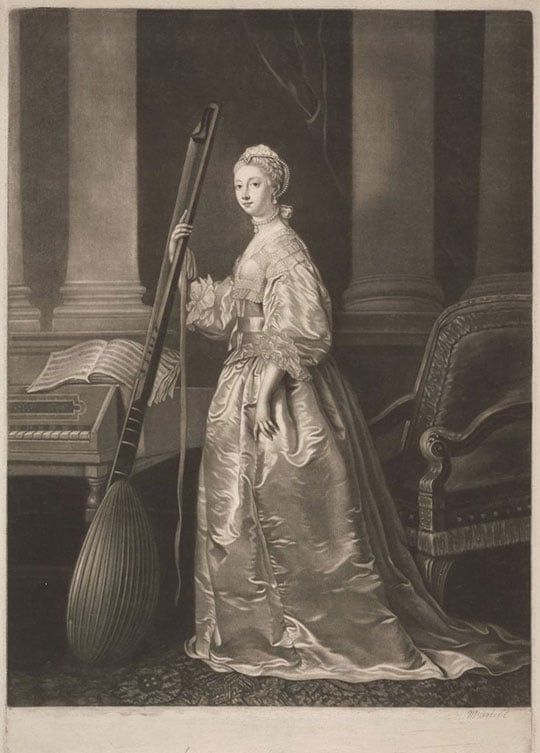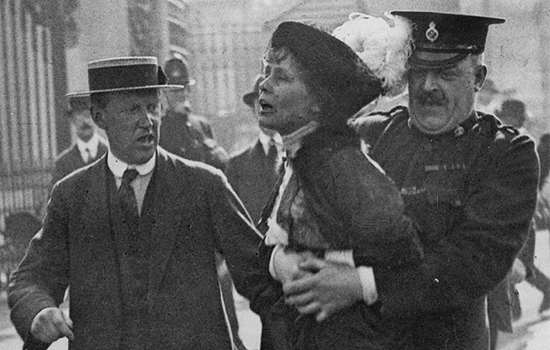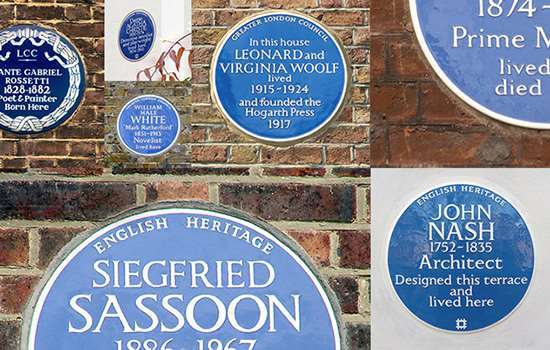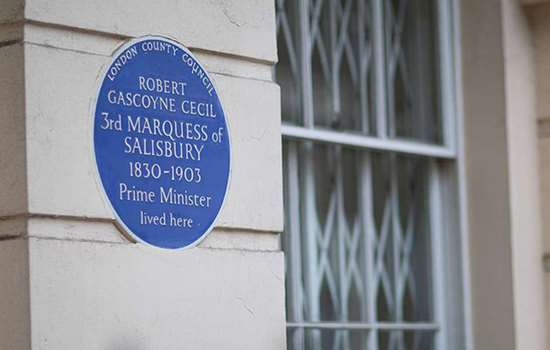AUBREY HOUSE
Plaque erected in 1960 by London County Council at Aubrey House, Aubrey Walk, Holland Park, London, W8 7JJ, Royal Borough of Kensington and Chelsea
All images © English Heritage
Category
Historical Sites
Inscription
Aubrey House stands on the site of Kensington Wells an early 18th century spa Former residents include SIR EDWARD LLOYD RICHARD 1st Earl Grosvenor LADY MARY COKE diarist PETER and CLEMENTIA TAYLOR philanthropists WILLIAM CLEVERLY ALEXANDER art lover
Material
Ceramic
Aubrey House (known as Notting Hill House until the mid 19th century) was built in the 18th century by Sir Edward Lloyd (c.1710–1795) adjacent to Holland Park on the site of Kensington Wells, an early 18th-century spa. It was home to several notable figures, some of whom are included on the unusual rectangular plaque.
18th Century
Lloyd, the house’s builder, was a Welsh baronet known for his extensive planting of trees at his Flintshire and Caernarvonshire estates. The first notable occupant of the house was politician Sir Richard Grosvenor, 7th baronet (1731–1802), who was known for breeding racehorses and for his scandalous personal life. He lived here briefly around 1767, and was later made Earl Grosvenor by Pitt the Younger.
From June 1767, Lady Mary Coke (1727–1811) was resident and subsequently altered the house. She made many references to it in her celebrated diaries. After she was widowed at 26, her aristocratic connections and a legacy from her father enabled her to be independent, mix in high society and travel frequently.
Her writing features a mixture of descriptions of everyday life and social observation. Horace Walpole was a close friend for many years, and she admired the political manoeuvring of Georgiana, Duchess of Devonshire. She was not always so astute, though, and imagined conspiracies and royal romances that led some to view her with ridicule and exasperation.

19th Century
The house later became a school before becoming home to noted liberals Clementia (1810–1908) and Peter Alfred Taylor (1819–1891), who made it their home in 1860. Clementia founded the Ladies’ London Emancipation Society, the first national woman’s anti-slavery group, in 1863, with her friend Sarah Parker Remond. Remond, an African-American abolitionist, gave Aubrey House as her address in her (successful) application for British citizenship in 1865.
Clementia was also an activist for women’s rights. The 1866 women’s suffrage petition was put together at Aubrey House and the first meeting of the Committee of the London National Society for Women’s Suffrage was held there on 5 July 1867. The meeting was attended by notable figures including Millicent Garrett Fawcett (who had met her husband at a gathering at Aubrey House in 1865).
Peter, known as PAT, was MP for Leicester for more than 20 years and was noted for his opposition to smallpox vaccination. To his detractors, he was ‘anti-everything’. He supported wider suffrage for men and for women, the opening of museums on Sundays and freedom for the press, and fought against the Contagious Diseases Acts and flogging in the armed forces.
The Taylors set up an educational establishment, the Aubrey Institute, in the grounds of the house in 1869 and opened it ‘to all, friend and stranger, black and white, rich and poor’.
Late 19th and early 20th Centuries
The London banker and art patron William Cleverly Alexander (1840–1916) lived at Aubrey House next, with his wife Rachel Agnes Lucas (1837–1915) and their children. The Alexanders were both from wealthy Quaker banking families, but more interested in art than finance. They collected art and were patrons of James Abbott McNeill Whistler, who painted portraits of three of their daughters.
During the First World War, the house was used as a hospital. Initially, the garden room and stables were used for convalescing soldiers. Then, after Cleverly Alexander died from a fall in 1916, his family offered the whole house to the War Office as a hospital and it continued as such until the Alexander daughters reclaimed it in 1920.
The unusual plaque was erected in 1960 by London County Council.
Further reading
- SM Farrell, ‘Grosvenor, Richard, first Earl Grosvenor (1731–1802)’, Oxford Dictionary of National Biography (2004; access with a UK public library card)
- Jill Rubenstein, ‘Coke [née Campbell], Lady Mary (1727–1811)’, Oxford Dictionary of National Biography (2004; access with a UK public library card)
- Elizabeth Crawford, ‘Taylor [née Doughty], Clementia (1810–1908)’, Oxford Dictionary of National Biography (2004; access with a UK public library card)
- ‘Records Revealed: Sarah Parker Remond’s application to become a British Citizen’, The National Archives
- Alan Ruston, ‘Taylor, Peter Alfred [PAT] (1819–1891)’, Oxford Dictionary of National Biography (2004; access with a UK public library card)


